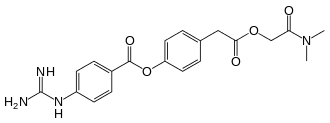
First, the release states that the vaccine worked: vaccine elicited a response and "There were no serious adverse events or safety concerns reported in the 216 trial participants"
BUT the vaccine trials will not advance to Phase 2/3, according to @CSL
The problem: Ph 1 data showed the generation of antibodies against fragments of a protein (gp41), a HIV-derived construct used to "stabilise the vaccine".
This was anticipated and "participants were informed of the possibility of a partial immune response to this component"
This was anticipated and "participants were informed of the possibility of a partial immune response to this component"
Perhaps this alone isn't an issue? After all the Oxford / @AstraZeneca COVID vaccine would also result in antibodies against the chimpanzee adenovirus vector.
The concern was that this resulted in "levels induced would interfere with certain HIV tests".
So the immune response itself is not an issue, it's that those vaccinated would test false-positive to HIV in certain tests.
So the immune response itself is not an issue, it's that those vaccinated would test false-positive to HIV in certain tests.
Up-front HIV screening is primarily ELISA-based, testing against antigens (such as that described above).
BUT positive HIV tests are re-confirmed, using a second assay:
hivinsite.ucsf.edu/insite?page=kb…
BUT positive HIV tests are re-confirmed, using a second assay:
hivinsite.ucsf.edu/insite?page=kb…
However it was concluded that "significant changes would need to be made to well-established HIV testing procedures in the healthcare setting to accommodate rollout of this vaccine."
So what is this 'HIV component' of UQ-CSL v451?
Side-note: the vaccine contains "MF59" - an immunologic adjuvant that uses squalene, owned by @NovartisScience
Side-note: the vaccine contains "MF59" - an immunologic adjuvant that uses squalene, owned by @NovartisScience
The vaccine itself relies on a SARS-CoV-2 spike protein construct that is different from those in the Pfizer/Modern/AZ vaccines.
Instead the use a 'molecular clamp technology' to 'lock' the Spike in the pre-fusion conformation.
Instead the use a 'molecular clamp technology' to 'lock' the Spike in the pre-fusion conformation.

The purified stablized ('clamped') spike protein is then formulated in vaccine.
Again: this is different to Pfizer/Modern/AZ vaccines that deliver the genetic code for spike protein to be produced in host cells in order to stimulate an immune response.
Again: this is different to Pfizer/Modern/AZ vaccines that deliver the genetic code for spike protein to be produced in host cells in order to stimulate an immune response.
The UQ team have engineered clamps for a range of viruses (red, below), that can be adapted as needed to engineered stable viral proteins for a range of diseases.
eurekalert.org/multimedia/pub…
eurekalert.org/multimedia/pub…

In the case of the SARS2 spike construct, the 'clamp' is engineered from HIV gp41 - and would be exposed and immunogenic, just like the SARS2 spike epitopes.
Diving into 'molecular clamp' technology articles, I can't find the specific reference to HIV or gp41 constructs, and this may have been proprietary until it was disclosed today.
gp41 itself is a transmembrane subunit of the envelope protein complex of retroviruses
en.wikipedia.org/wiki/Gp41
en.wikipedia.org/wiki/Gp41

This is is a pre-print article describing the vaccine ; the nature/origin of the molecular clamp is not directly stated, but protein is purified with "the anti-clamp mAb HIV1281" - so it's structural and used as an antigen for purification.
researchsquare.com/article/rs-688…


researchsquare.com/article/rs-688…



This paper includes rat, ferret and hamster data, but they don't appear to disclose any evaluation of HIV ELISA assay positivity in this paper - not clear whether they tested for it and decided not to disclose, or it only appeared in the human studies.
Most translational science program are not successful, because biology is complicated, but we are working to get better at it. Shout-out to the @UQ_News and @CSL scientists who engineered a vaccine in months and took it into clinical trials. Remarkable. @ProfPaulYoung
Remember: the UQ vaccine was safe and elicited a strong immune response.
It is not being advanced because an outcome of vaccination interferes with a different diagnostic process. This 'molecular clamp' technology can be re-optimized and advanced.
(@MackayIM thread)
It is not being advanced because an outcome of vaccination interferes with a different diagnostic process. This 'molecular clamp' technology can be re-optimized and advanced.
(@MackayIM thread)
Nice article by @liammannix covering this
(Liam, see too-long thread above)
smh.com.au/national/how-c…
(Liam, see too-long thread above)
smh.com.au/national/how-c…
As a real-up here’s the @SBSNews live feed on a long-ish press conference on the vaccine development challenges :
twitter.com/i/events/13372…
twitter.com/i/events/13372…
Relevant slides confirming general approach, and confirming false positives in ELISA where bait is HIV Gp41 protein construct 





• • •
Missing some Tweet in this thread? You can try to
force a refresh





